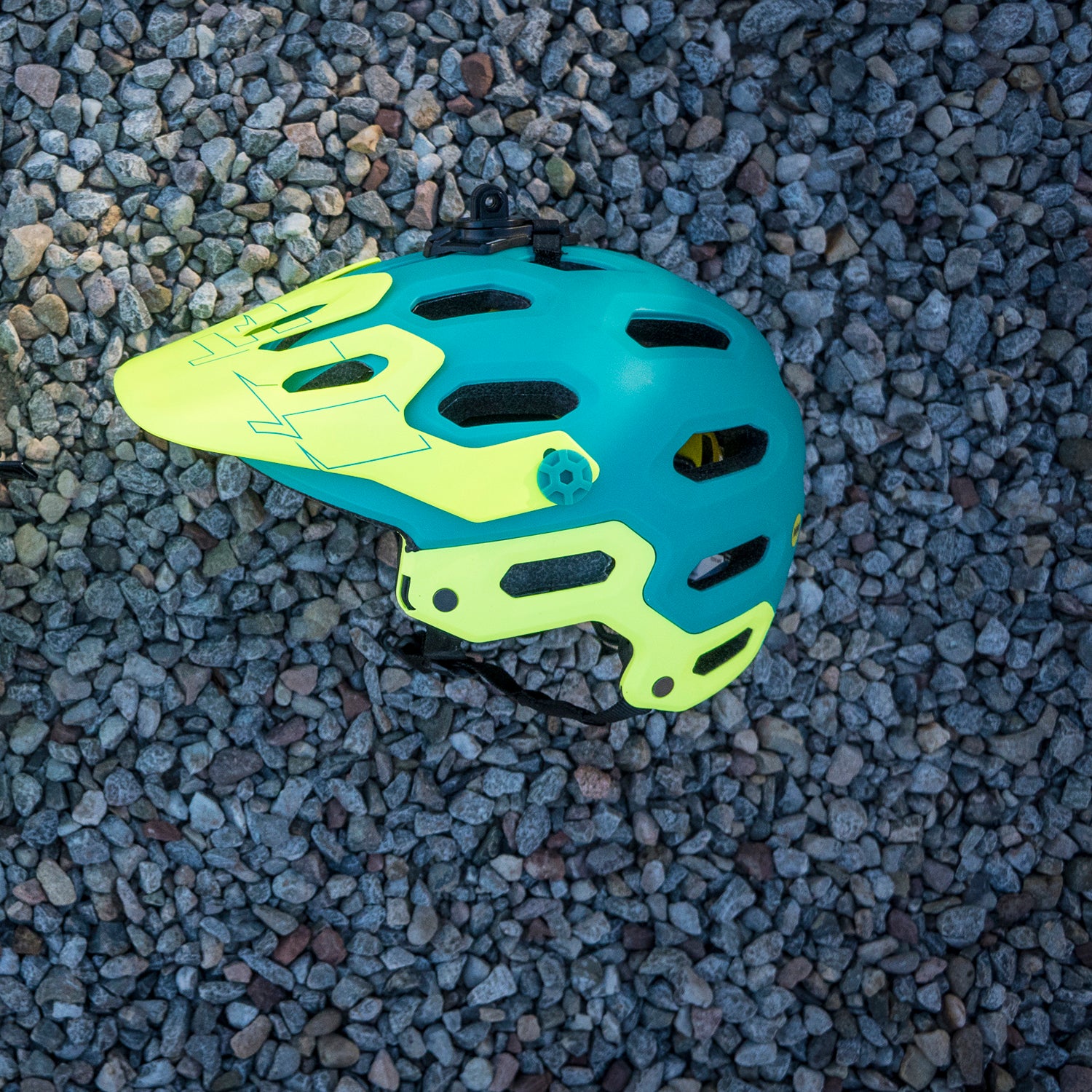New helmets are, by and large, hard to get excited about. Sure, there are functional differences between brands and models (think: lightweight for XC or aero for racing), and shapes and styling vary. But all cycling lids are rated to one of a few safety standards, meaning they’re pretty much equal when it comes to what matters, and liability laws keep manufacturers from making added safety claims. This can make them about as titillating as seat belts or air bags.
That said, I’m fired up about the continued evolution of the Bell Super series. I’ve been wearing the first-gen Super 2, and subsequently the Super 2R, which added a removable chin bar, for the past three years. And now that I’ve received the update, the , I’m convinced this is the most versatile mountain bike helmet money can buy.
A bit of background: when it launched, the Super 2 was one of the first new-school trail and enduro helmets that combine the ventilation and construction of a high-end lid with the additional coverage on the sides and back for more protection in high-consequence riding. The Super 2R added a removable chin bar so you could pedal uphill in comfort but, by carrying the add-on in your pack, still have many of the protections of a full-face for rowdy descents. The chin piece attaches with three quick buckles and is easy to install or remove, even with the helmet on your head.
The Super 3R keeps all of those features, with a few key upgrades. Thanks to a new shell shape and some tweaks on the fit, it’s transformed from a very good helmet to the best all-around mountain helmet on the market. The new retention system, which has a three-position vertical adjustment as well as the standard band-style horizontal wrap controlled by a twist dial, fits lower on the head, which seems to alleviate some of the wobbliness of the earlier model. The cheek pads in the chin bar now have removable foam inside to better accommodate multiple face shapes and sizes. And Bell has also added MIPS technology, which is said to protect against rotational forces in a crash. Other than that, all the other bells and whistles remain: X-Static anti-microbial padding, an adjustable visor that swings clear to hold goggles out of the way, and an included GoPro mount.
It’s true that the Super 3R isn’t , which demands greater impact protections for higher risk riding, like the brand new , also an incredible helmet. (If I wanted one helmet to do it all and I was into big hucks, I’d definitely look at the Switchblade.) But the Bell is lighter and better ventilated, and since most people don’t need full downhill protection, it's a better all-arounder. And while it’s not quite as light as many standard trail helmets (430 grams versus 381 grams for the Giro Montaro and 355 grams for the ), I think the versatility of the removable chin bar makes up for that minor weight gain.
The Super 3R isn’t cheap at $230, but it's a bargain when you consider a good trail or enduro helmet runs between $150 and $210, while a separate full-face would cost at least another $220, and up to $500. I also love that Bell offers the chin bar as a separate accessory and has made the design backwards compatible, meaning if you have a Super 2 or Super 3, you can always add the chin piece later.
I’ve been wearing the Super 3R as my go-to all-around mountain bike helmets since it launched a couple weeks ago. The ventilation and comfort are absolutely astonishing given how much protection the lid affords. Occasionally, when I know a ride will involve an especially hairy descent or something with big jumps and drops, I’ll throw the chin bar in the pack and feel that much more secure when the time comes. And for people like me, who ride occasionally at the bike park but don’t really want the added clutter or expense of a second, full-face helmet, the Super 3R is the perfect compromise.


